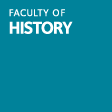The question of what women should and should not read was a recurring theme of nineteenth-century cultural commentary and pedagogical treatises, however little is known about what ordinary young women were in fact able to read.This article explores girls’ reading at school in the period before the development of publicly funded secondary schools for girls as a way of examining the impact of such debates on girls’ reading. It demonstrates that the gendered discourse of reading had a practical effect on those who sought to govern girls’ schools, and on the books pupils might have access to, but also suggests that pupils were sometimes able to use their reading to their own ends, and to read more critically than their schoolmistresses might have intended.



